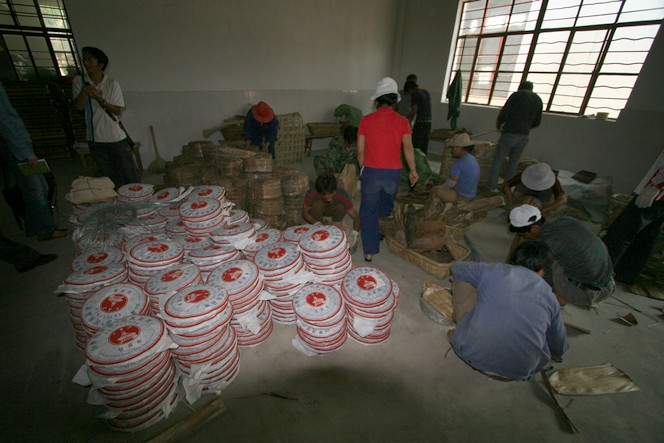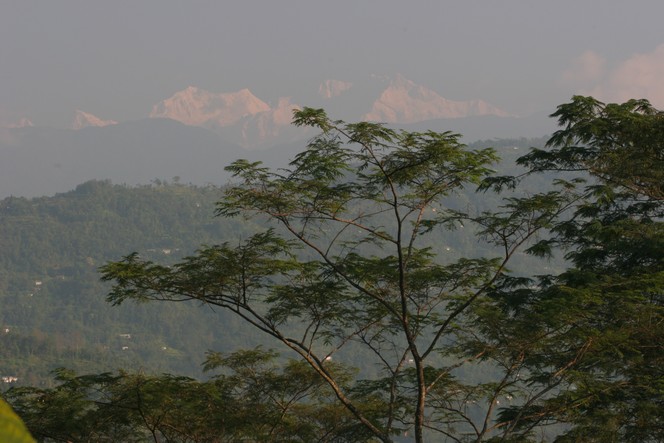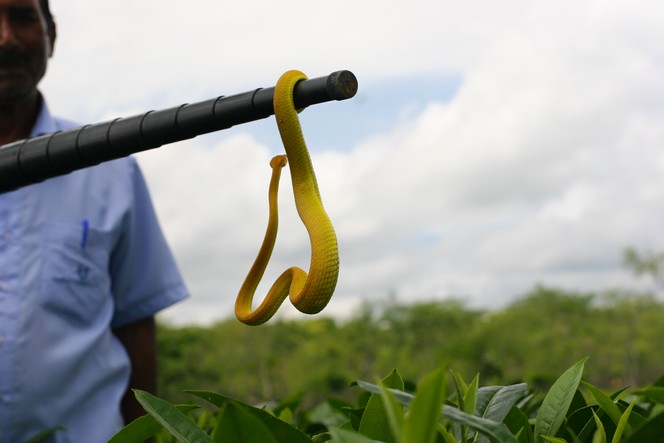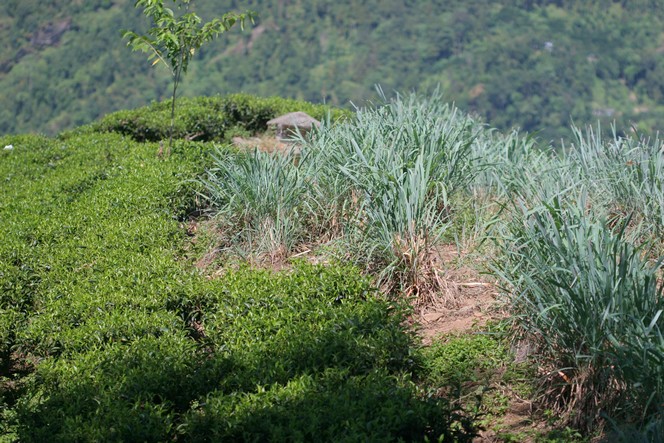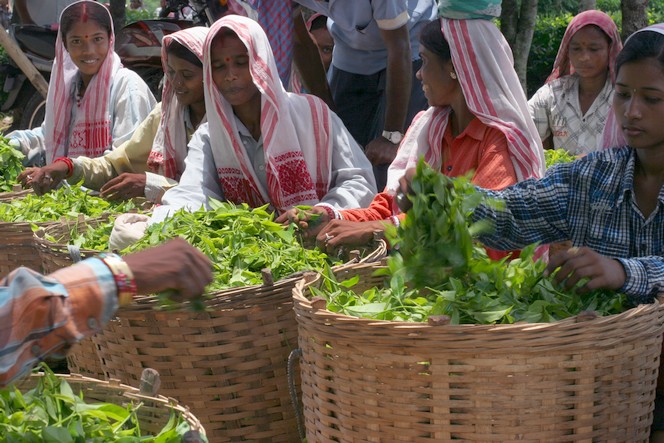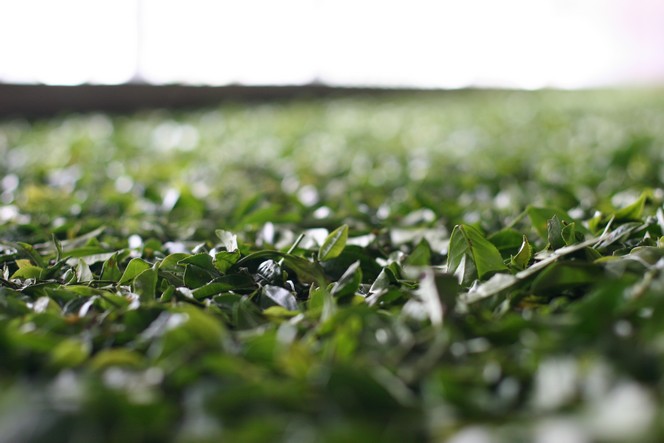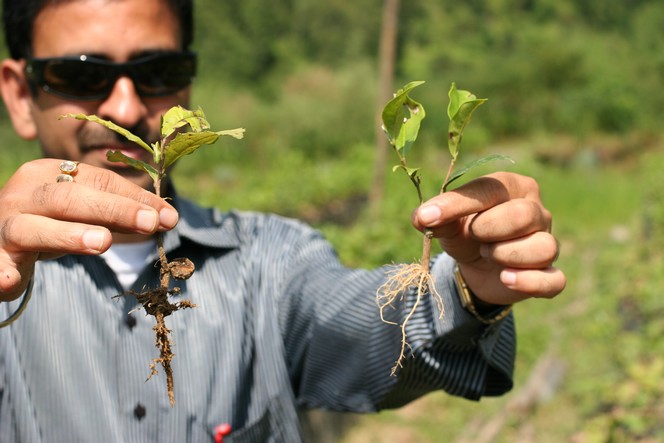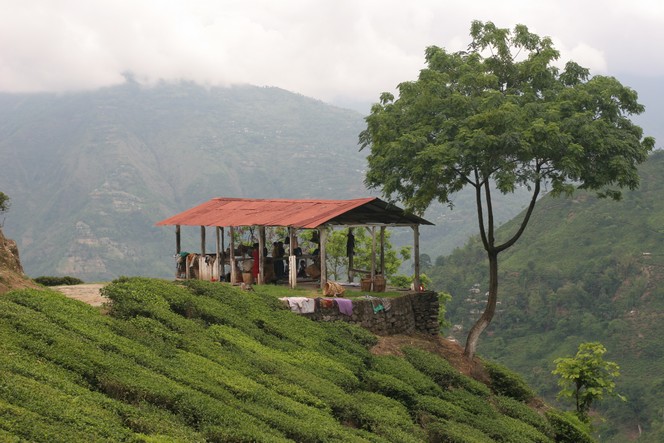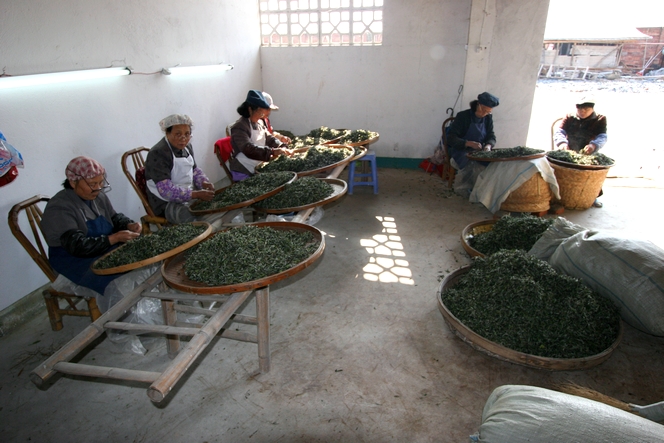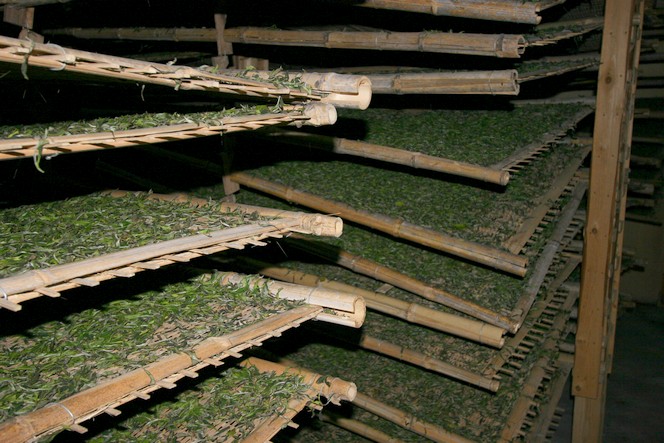I know that your main objective at the moment is to wrap your purchases so they are ready to go under the Christmas tree in a few days’ time. Well, in China there’s a tea called Pu Erh which requires wrapping with just as much care. Pu erh can be bought loose, but it is mainly found in the form of a compressed cake. Having been left to dry on racks, each cake is wrapped in a sheet of printed rice paper, as you can see in this photo. The protected cakes are then wrapped in groups of seven in a dried banana leaf. The tea is then ready to embark on its journey and arrive with you after the festivities, which is just at the right time: in China, Pu Erh is said to lower cholesterol. Rightly or wrongly, it is sometimes known as the “fat-eating” tea.
From plant to cup
Third flush Darjeeling teas are coming
A few days ago I bought a wonderful third flush Singbulli, and this morning I have just confirmed the purchase of a Rohini, also harvested in November. The first lot only weighs 70 kilos, the second lot just a little more, and they will arrive in France in December.
Those of you who love fine Indian teas must remember that Darjeelings produced in March, June and the autumn have very little in common. The reason is that this mountain you see here, Kanchenjunga (8,586 m), creates a great contrast with the weather conditions of the plains on the subcontinent. Darjeeling is one of the tea-producing regions with the most varied climate.
In warmer seasons, the southerly wind brings some of the stifling heat of the plains to these mountains. On the other hand, as winter approaches, the peaks make their presence felt, the sky becomes clear and the temperature drops. And the growth of the tea plants gets slower and slower, which is another reason for the variations in their flavours.
Snakes also live among tea plants
A few weeks ago I introduced you to a creature which, while not exactly loveable, is highly admirable. On my French blog, someone said it might belong to the Nephila family, others said it could be one of the Theridiidae or Nicodamidae families. After seeing the many comments you left, I’ve decided to introduce you to another creature today. Equally elegant, I encountered it recently after it slid silently between the branches of a tea bush, just level with my waist. Tea bushes are planted close to each other to make harvesting easier, which means that when you decide to venture into the middle of the field, your feet are completely hidden from view. So you walk looking straight ahead, moving as best you can. You don’t take any notice of the many beasts living in these humid conditions.
Here in Assam, while I was holding back the branches of the shrubs to clear my path, the man behind me stopped me suddenly because he’d seen something yellow near my left arm, undulating beneath the foliage. Once I’d got over my surprise, I turned my head slowly, moving as little as possible so that the animal would never imagine I was anything other than an ordinary tree trunk, to avoid stressing it unnecessarily.
A few minutes later, my companion showed me this fine-looking snake on the end of his stick so that I could take its photo, and now I’d like to know its name. It was as beautiful as a rare jewel and as supple as a necklace, and it gleamed like gold. Before leaving us, overcome by shyness, the snake took the time to make something resembling a heart shape with its body, a way of asking us to respect all the love that nature offers us.
Citronella growing among organic tea plants
In some plantations where organic or sustainable farming methods are used, you will see citronella plants growing among the tea bushes or along the edges of paths. There are several advantages to the citronella’s presence, particularly its ability to repel many insects that would damage the precious tea leaves.
Pluckers checking the quality of their work
At the end of every morning and afternoon during the harvest, the women gather to get their leaves weighed. It’s an opportunity to relax, and everyone talks, unless they want to listen to what the others have to say. Of course, if they find a stranger like myself among them, as they did that day, their tongues wag even faster, accompanied by plenty of laughter.
While listening to their colleagues joking, the pluckers run their hands through the leaves to check the quality of their work. The pretty red and white fabric these women wear on their heads is typical of their region: Assam.
Withering fills the leaves with a wonderful fragrance
The withering of tea leaves can take several tens of hours, during which time the leaves will lose some of their water content. In order to avoid the risk of oxidisation, hot or cold air is sometimes blown beneath the leaves. At this point, the air is filled with a wonderful fragrance, very typical and very floral, which can be detected for hundreds of metres around. I never grow tired of this smell. I find it captivating.
There are two ways of growing a new tea plant
There are two ways of growing a new tea plant. You can plant a seed, or a cutting.
Here, Rajiv Gupta, grower at the Tumsong Tea Estate, explains how the roots of a tea plant grown from seed (on the left) reach deep into the ground, while the roots of a tea plant grown from a cutting (on the right) spread out and don’t go very deep. This has important consequences in terms of how the plant withstands bad weather, dryness and soil erosion.
This shelter is where the pluckers gather
When it is time to take a break, the pluckers in Darjeeling gather in the shade to drink tea or eat their meals. We would all love to be able to have lunch every day in such a peaceful setting…
These shelters are also where the pluckers take the leaves to be collected and weighed. Once gathered together, the leaves are loaded onto a trailer and a tractor promptly tows them away to the factory for processing.
Selecting the best tea requires patience
In China as well as in India, when it comes to making high quality tea, no effort is spared in ensuring that only the best leaves are selected. Here, in Fuding (China), these workers are checking all the leaves of the Bai Mu Dan that has just been produced, one by one. It is a painstaking task that requires a great deal of patience. Only when this stage is finished can the leaves be packed into chests and shipped to the buyer.
The delicate art of withering white tea leaves
In the past, the withering of tea leaves took place in the open air, but nowadays it increasingly happens in a heated, well ventilated room. This system offers greater control over the ambient conditions. Here, in Fujian (China), the temperature and humidity levels are carefully regulated, and the room benefits from a sophisticated ventilation system. Which means the leaves of this Bai Mu Dan can gradually lose their water content.

